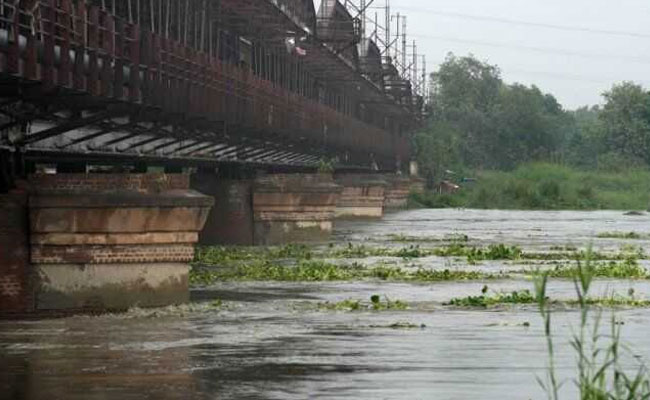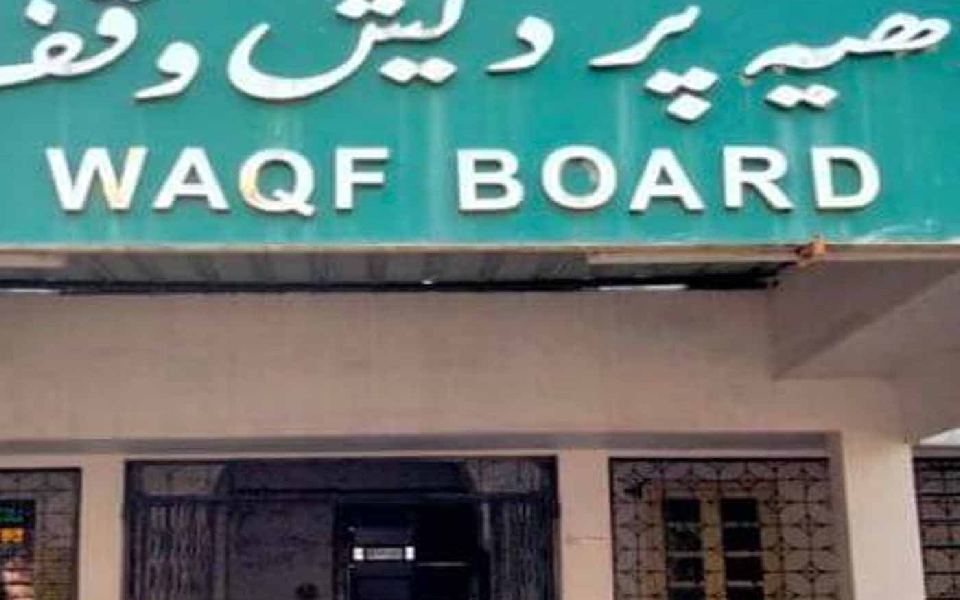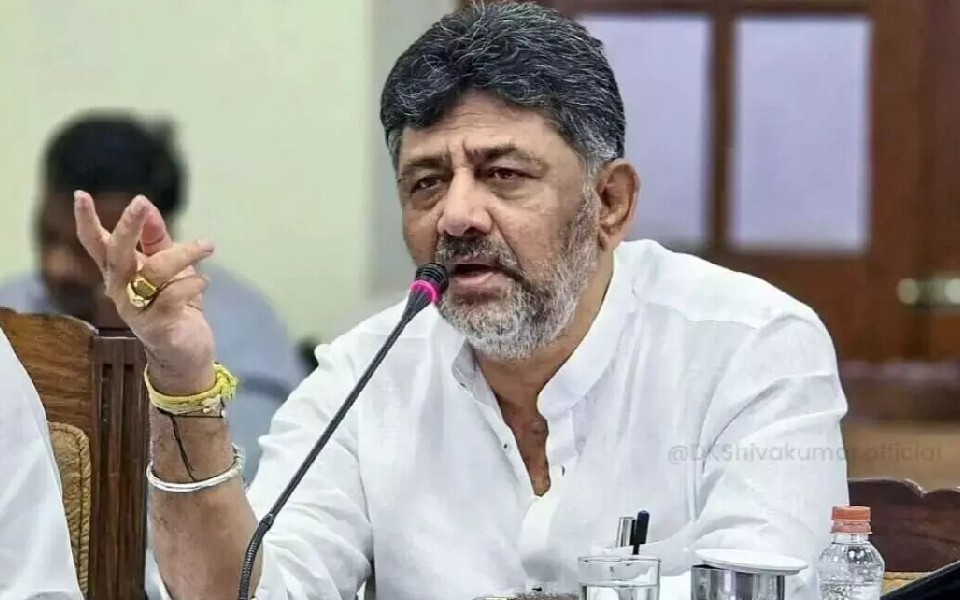New Delhi (PTI): The water level of the Yamuna in Delhi breached the danger mark again on Sunday following a surge in discharge from the Hathnikund Barrage into the river after heavy rain in parts of Uttarakhand and Himachal Pradesh.
Further increase in the water level of the river is expected to impact relief and rehabilitation work in the flood-affected low-lying areas of the capital, officials said.
Revenue Minister Atishi on Saturday said the Delhi government is on high alert due to discharge of over 2 lakh cusecs of water from the Hathnikund Barrage into the river and that some parts of Yamuna Khadar (floodplains) might get inundated if the water level rises to 206.7 metres.
The river water level had been hovering around the danger mark of 205.33 metres for the last few days after reaching an all-time high of 208.66 metres on July 13.
The Central Water Commission's (CWC) data showed the water level rose from 205.02 metres at 10 pm on Saturday to 205.96 metres at 9 am on Sunday. It is expected to reach 206.7 metres by 4 pm.
The India Meteorological Department has predicted heavy to very heavy rain in parts of Himachal Pradesh and Uttarakhand till July 25.
According to the CWC data, the flow rate at the Yamunanagar-located Hathnikund Barrage crossed the 1 lakh-mark at 9 am on Saturday and oscillated between 2 lakh and 2.5 lakh cusecs between 10 am and 5 pm. Since then, it has remained between 1.5 lakh cusecs and 2 lakh cusecs.
"This significant volume of water poses a risk of mid-scale floods in the capital, which is still recuperating from one of the worst flood spells it experienced in the second week of July.
"The second spell of floods will likely see the Yamuna river reclaiming most of its floodplain in Delhi. Given the valuable insights gained from the last flood spell this month, city planners and policy makers must take note of the lessons learned. Citizens are counting on the swift response of authorities, expecting all the gates of the ITO barrage to be opened and fully functional. Additionally, immediate attention should be given to fix any breached sites and bunds," said Bhim Singh Rawat, associate coordinator of the South Asia Network on Dams, Rivers and People.
There have been marginal fluctuations in the water level over the last four to five days amid rain in the upper catchment areas, primarily in Himachal Pradesh and Uttarakhand.
Delhi Irrigation and Flood Control Department officials said heavy rains upstream of Delhi will impact rehabilitation of the affected families in the inundated low-lying areas of the capital and they may have to stay in relief camps for a longer period.
It could also impact the water supply in the city, which became normal only on Tuesday after being affected for four or five days due to the inundation of a pump house at Wazirabad.
The pump house supplies raw water to Wazirabad, Chandrawal and Okhla treatment plants, which together account for around 25 per cent of the city's supply.
Parts of Delhi have been grappling with waterlogging and flooding for more than two weeks now.
Initially, a downpour caused intense waterlogging on July 8 and 9, with the city receiving 125 per cent of its monthly rainfall quota in just two days.
Subsequently, heavy rains in the upper catchment areas of the Yamuna, including in Himachal Pradesh, Uttarakhand and Haryana, led to the river swelling to record levels.
At 208.66 metres on July 13, the Yamuna surpassed its previous record of 207.49 metres set in September 1978 by a significant margin. It breached embankments and penetrated deeper into the city than it has in over four decades.
The consequences of the floods have been devastating, with more than 27,000 people evacuated from their homes. The losses incurred in terms of property, businesses and earnings have run into crores.
Experts attribute the unprecedented flooding in Delhi to encroachment on the river floodplain, extreme rainfall within a short span of time and silt accumulation that has raised the riverbed.
Let the Truth be known. If you read VB and like VB, please be a VB Supporter and Help us deliver the Truth to one and all.
Waqf, a pious endowment in Islamic law is rooted in the teachings of Prophet Muhammad (PBUH). A companion Abubakr Siddiq (RA) purchased and assigned the land for construction of mosque of Prophet in Madina. The Quranic revelation “You will not attain unto piety until you spend of that which you love”.
The messenger of Allah said, “when a human being dies his deeds end except for three: ongoing charity, beneficial knowledge or a righteous child who prays for him”. It has encouraged Muslims to dedicate wealth for good cause like Waqf.
Concept of Waqf
The concept of waqf in Muslim law is a permanent dedication of properties for religious, charitable and pious purposes. The word waqf comes from the Arabic word which means to tie up, stoppage or detain. The movable and immovable assets are dedicated unconditionally to divine and must be irrevocable. The donor is called a Waqif the Waqif appoints a Muthavalli or trustee to manage the property. The usufruct of property is utilised for the specific purpose for which it is dedicated or for the benefit of the destitutes. Once an asset is dedicated to the divine it cannot be sold transferred hypothecated or given as a gift.
Auqaf in India
The idea of waqf dates back to the Delhi sultanate when Sultan Muizuddin Sam Ghour dedicated two villages in favour of Jamia Masjid Multan. In Mughal rule there was no centralised management of waqfs. They are managed by individually appointed trustees under the supervision of local Imams. He was accountable to regional khazi. The law of waqf was codified under British rule. “Musalman Waqf Validating Act 1913”, “Musalman Waqf Act 1923” were passed. The “Shariat Application Act 1937” notified that waqf properties comes under Muslim personal law. After independence Waqf Act 1954 was enacted for the entire country except the state of Jammu and Kashmir. Further a comprehensive Act was brought in force in the year 1995. Adjudication of waqf litigations by the waqf Tribunals was introduced. There after it was further amended during 2013 providing representation to women in the waqf board, multi member waqf Tribunals and the alienation of waqf properties is considered as non bailable and cognizable offence with up to 2 years rigorous imprisonment.
Management of Auqaf in Karnataka
During Vijayanagar, Bahamani, Adil Shahi, Tippu and Wodeyar's rule, numerous charities and endowments were made to Hindus and Muslims. The religious endowments of Hindus and Muslims were managed as per the provisions of The Mysuru Muzrai Manual 1934. During 1974 the state government decided to transfer these waqf properties to the waqf Board for their management under Waqf Act 1954.
Abolition of Zamindari System
Consequent to the abolition of Zamindari system Karnataka Inam Abolition Act 1955, Karnataka certain Inams Abolition Act 1977 were passed. Consequent to the 73rd amendment to the constitution Karnataka Land Reforms Act 1974 was enacted. Due to these enactments more than 79,000 acres of notified waqf properties were granted to the Inamdars and tenants out of 1.7 lakh acres in the state.
Waqf is always a Waqf
Honourable supreme court of India in Syed Ali and Others V/S Andhra Pradesh Waqf Board ordered on 18/01/1998 that “Waqf is always a Waqf” and the grant of Patta in favour of Mokhasadar under the Inam Act does not in any matter, nullify the earlier dedication made of the property constituting the same as waqf.
The Karnataka State Board of Auqaf sought clarification from the state government regarding applicability of Karnataka Religious and Charitable Inam Act, Karnataka Certain Inams Abolition Act 1977 and Karnataka Land Reforms Act 1974 to the waqf properties in view of the aforesaid Supreme Court judgement. The then Secretary to government Minority Welfare Department in his letter dated 27/07/2017 sought the opinion of the Law Justice and Human Rights Department. The said department clarified that the properties which the State Government claims to have vested in the government by virtue of Inam Abolition Laws or Land Reforms Act have no juridical significance. In view of the interpretation of waqf made by Honourable Supreme Court of India in its judgement reported in AIR1998 SC 972, Law department is of the opinion that once a property held to be Waqf property, in such an event there is no scope for application of either Inam abolition Laws or land reforms Act.
The State Government in its letter no MWD118WES2017 dated 19/12/2017 directed the Karnataka State Board of Auqaf to recover the Waqf lands acquired by individuals as well as the groups and to take legal action as per the provisions of the waqf Act 1995 (Amendment) Act 2013. The Board requested the Regional Commissioners and Deputy Commissioners in the State to restore the waqf properties affected under The Inams and Land Reforms Laws. Accordingly, the Tahsildars initiated to issue notices to such grantees and noted as “Waqf Property” in the record of rights of such properties. Many of such grantees have assailed the mutations effected by the Tahsildars. The Honourable High Court of Karnataka has issued directions to the Tahsildars to issue notices, hear them and then take the decision.
Now the state government has decided not to issue any notices which is obviously against the decision of Honourable Supreme Court of India and the clarification issued by the Law Department. Lest there is serious social, political and legal implications inherent in the implementation of orders of Honourable Supreme Court. Since 1995 to date the Inamdars and tenants have sold the properties, some of the lands are converted to non-agricultural purposes, residential lay outs have come up and commercial buildings are in use. The state government has to ponder over the issue with legal luminaries, Waqf Board authorities, senior bureaucrats and social scientists and come out with an acceptable solution in the interest of lasting peace in the society.
This article is written by Mujibullah Zaffari, Former Chief Executive Officer, Karnataka State Waqf Board.





